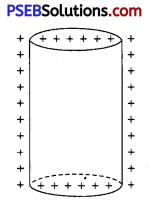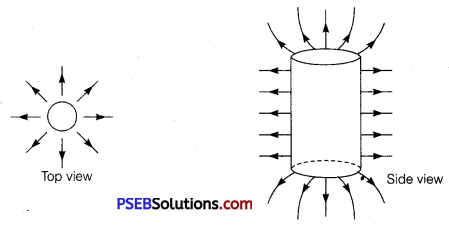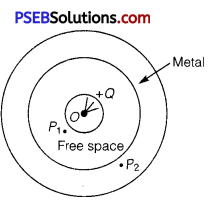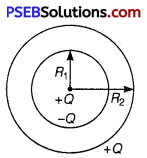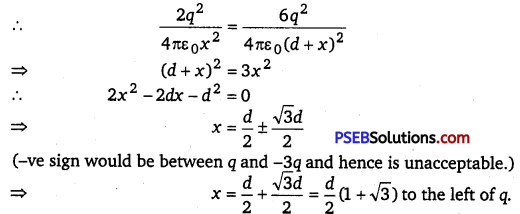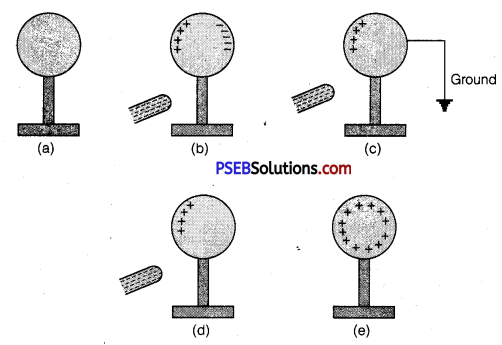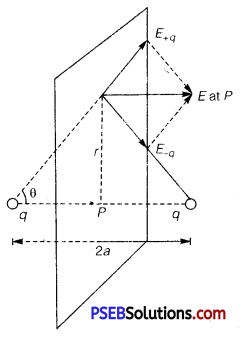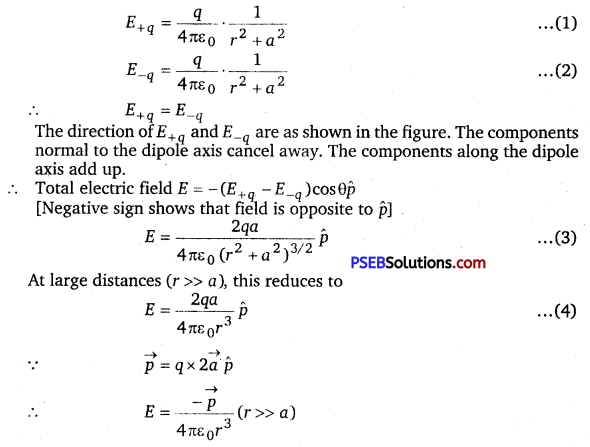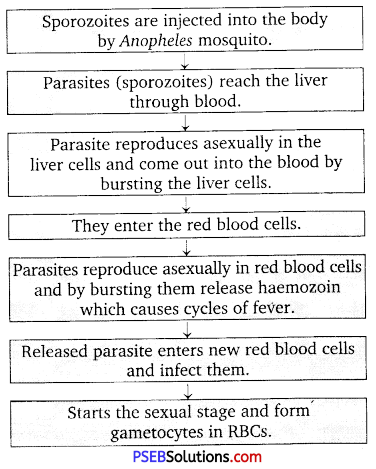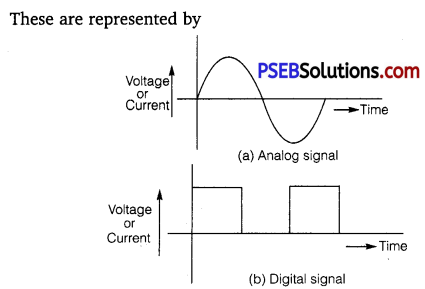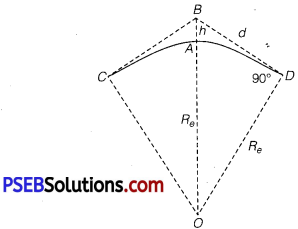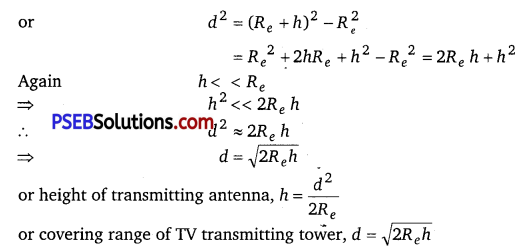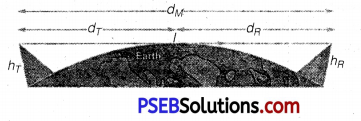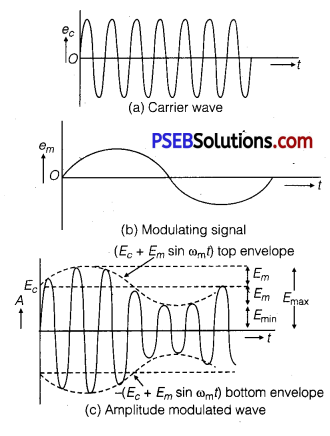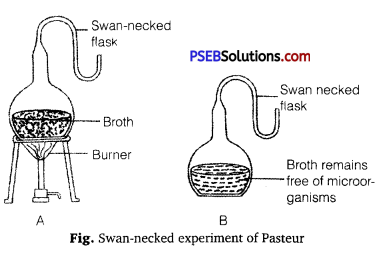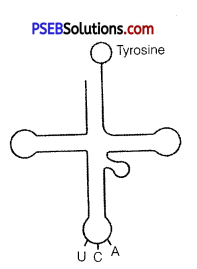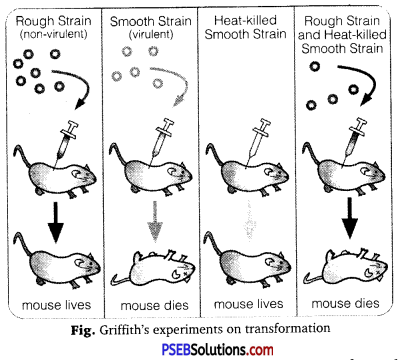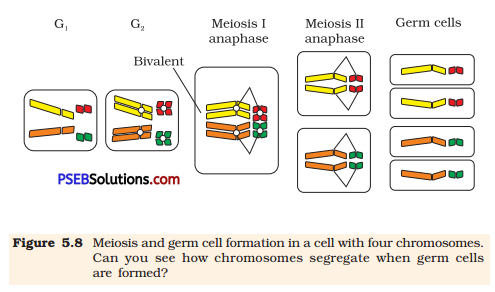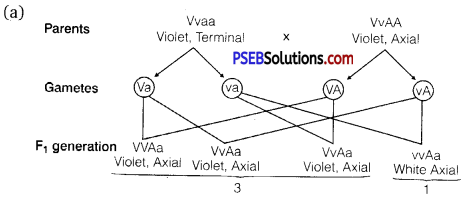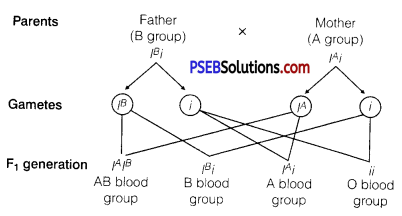Punjab State Board PSEB 12th Class Biology Important Questions Chapter 12 Biotechnology and its Applications Important Questions and Answers.
PSEB 12th Class Biology Important Questions Chapter 12 Biotechnology and its Applications
Very short answer type questions
Question 1.
State the role of transposons in silencing of mRNA in eukaryotic cells.
Answer:
Transposons or mobile genetic elements in viruses are the sources of the complementary dsRNA, which in turn bind to specific mRNA and cause RNA interference of the parasite.
Question 2.
How do interferons protect us?
Answer:
Interferons protect non-infected cells from further viral infections, by creating cytokine barriers.
![]()
Question 3.
State the role of C peptide in human insulin.
Answer:
C-peptide (extra stretch of polypeptide) makes the insulin inactive.
Question 4.
How are two short polypeptide chains of insulin linked [ together?
Answer:
Two short polypeptide chains of insulin are limced together by disulphide bridges.
Question 5.
How can bacterial DNA be released from the bacterial cell for biotechnology experiments?
Answer:
The bacterial cell wall is digested by the enzyme lysozyme to release 1 DNA from the cell.
Question 6.
Suggest any two possible treatments that can be given to a patient exhibiting adenosine deaminase deficiency.
Answer:
- Enzyme replacement therapy (in which functional ADA is injected)
- Bone marrow transplantation
- Gene therapy/Culturing the lymphocytes followed by introduction of functional ADA cDNA into it and returning it into the patient’s body. (Any two)
Question 7.
Name a molecular diagnostic technique to detect the presence
of a pathogen in its early stage of infection.
Answer:
ELISA (Enzyme Linked Immunosorbent Assay)
![]()
Question 8.
What are transgenic animals. Uive an example.
Answer:
The transgenic animals are those that have their DNA manipulated to possess and express/foreign genes e.g.. transgenic cow-Rosie, rats, pigs fish, rabbits and mice.
Question 9.
What was the speciality of the milk produced by the transgenic cow, Rosie?
Answer:
The first transgenic cow, Rosie, produced milk with human alpha-lactalbumin which was nutritionally, more balanced product for human babies than natural cow milk.
Question 10.
What is biopiracy?
Answer:
Biopiracy refers to the use of bioresources by multinational companies and other organisations without proper authorisation from the country and people without compensatory payment.
Question 11.
Name the following:
(a) The semi-dwarf variety of wheat which is high-yielding and disease-resistant.
(b) Any one inter-specific hybrid mammal.
Answer:
(a) Kalyan Sona/Sonalika
(b) Mule/Hinny/Liger/Tigon
Question 12.
For which variety of Indian rice, patent was filed by a USA Company? [NCERT Exemplar]
Answer:
Indian Basmati was crossed with semi-dwarf variety and was claimed as a new variety for which the patent was filed by a USA company.
![]()
Question 13.
Name the enzymes that are used for the isolation of DNA from bacterial and fungal cells for recombinant DNA technology.
Answer:
Bacteria: lysozyme; fungi : chitinase.
Question 14.
Bt cotton is resistant to pest, such PS lepidopteran, dipterans and coleopter&ns. Is Bt cotton resistant to other pests as well? [NCERT Exemplar]
Answer:
Bt cotton is made resistant to only certain specific taxa of pests. It is quite likely that in future, some other pests may infest the Bt cotton plants. It is similar to immunisation against small-pox which does not provide immunity against other pathogens like those that cause cholera, typhoid, etc.
Short answer type questions
Question 1.
Explain the application of biotechnology in producing Bt-cotton.
Or One of the major contributions of biotechnology is to develop pest-resistant varieties of cotton plants. Explain how it has been made possible.
Or One of the main objectives of biotechnology is to minimise the use of insecticides on cultivated crops. Explain with the help of a suitable example how insect resistant crops have been developed using techniques of biotechnology.
Answer:
Production of Bt-cotton, a Pest Resistant Crop : Soil bacterium Bacillus thuringiensis possess gene called Cry-gene which synthesises an endotoxin protein called Cry-protein. Now, by biotechnology technique, the Cry gene from B. thuringiensis have been isolated, cloned, introduced and incorporated into cotton-plant using recombinant DNA technology. In the genetically modified cotton crop plants, the Cry or Bt-toxin gene expresses to produce a toxic insecticidal protein in an inactive form called prototoxin in crystalline state.
As an insect feeds over the plant, the inactive prototoxin crystals pass into the gut where alkaline pH and digestive enzymes solubilise the crystals and convert the prototoxin into an active toxin. The activated toxin creates pores in the midgut epithelial cells by lysing that cause death of the insect. Thus, the GM cotton plants do not require protection of expensive insecticides as they themselves act as bioinsecticides.
Since there are a number of Cry genes and Cry IAc and Cry II Ab controls the cotton bollworms while Cry IAb controls corn borer.
Question 2.
Write the functions of
(a) cry lAc gene
(b) RNA interference (RNAi)
Or Explain the process of RNA interference.
Answer:
(a) Cry IAc gene is present in Bacillus thuringiensisThe gene encodes for a toxic insecticidal protein during a particular phase of their growth. Cry genes are isolated and incorporated in the crop plant. The insect feeding on transgenic crop die because of the presence of toxin protein. Cry IAc produces Bt-toxins specific for cotton bollworm insect group.
(b) RNAi involves the silencing of a specific m-RNA due to the complementary ds-RNA molecule that binds to and prevents translation of m-RNA. As a result, parasite a favourable protein are not produced
and it could not infest, multiply and survive in a transgenic host expressing specific RNA interference. The transgenic plant, therefore, gets itself protected from the parasite such as nematode.
![]()
Question 3.
How did Eli Lilly synthesise the human insulin? Mention one difference between this insulin and the one produced by the human pancreas.
Or How did Eli Lilly Company go about preparing the human insulin? How is the insulin thus produced different from that produced by the functional human insulin gene?
Or How did an American Company, Eli Lilly use the knowledge of r-DNA technology to produce human insulin?
Or Explain how Eli Lilly, an American Company, Produced insulin by Recombinant DNA technology?
Answer:
Eli Lilly prepared two DNA sequences corresponding to A and B chains of human insulin and introduced them in plasmids of E. coli to produce insulin chains. Chains A and B were produced separately, extracted and combined by creating disulphide bonds to form human insulin.
Insulin in human pancreas is synthesised as a pro-hormone containing the C peptide, which is removed to form mature hormone. The synthesised insulin did not contain C peptide and was directly prepared
in mature form.
Question 4.
How is a mature functional insulin hormone different from its pro-hormone form? [NCERT Exemplar]
Answer:
Mature functional insulin is obtained by processing of pro-hormone which contains extra peptide called C-peptide. This C-peptide is removed during maturation of pro-insulin to insulin.
Question 5.
How does a transgenic organism differ from the rest of its population? Give any two examples of such organism for human advantage.
Answer:
A transgenic organism contains foreign gene, hence it differs from the rest of the population in having one or more extra genes apart from the gene pool of that population showing an additional phenotype. Example, (i) Transgenic E. coli, with gene for human insulin, (ii) Transgenic mouse with gene for human growth hormone.
Question 6.
What is GEAC and what are its objectives? [NCERT Exemplar]
Or Mention two objectives of setting up GEAC by our Government.
Or State the purpose for which the Indian Government has set up GEAC.
Or Describe the responsibility of GEAC, set up by the Indian Government.
Answer:
GEAG (Genetic Engineering Approval Committee) is an Indian government organisation. Its objective are to:
(a) examine the validity of GM (Genetic modification of organism) research.
(b) inspect the safety of introducing GM for public services.
![]()
Long answer type questions
Question 1.
List the disadvantages of insulin obtained from the pancreas of slaughtered cow and pigs. [NCERT Exemplar]
Answer:
- Insulin being a hormone is produced in very little amounts in the body. Hence, a large number of animals need to be sacrificed for obtaining small quantities of insulin. This makes the cost of insulin very high, demand being manyfold higher than supply.
- Slaughtering of animal is also not ethical.
- There is potential of immune response in humans against the administered insulin which is derived from animals.
- There is possibility of slaughtered animals being infested with some infectious micro-organism which may contaminate insulin.


